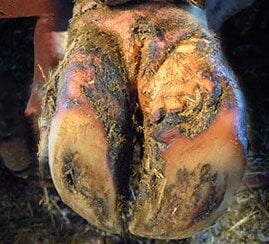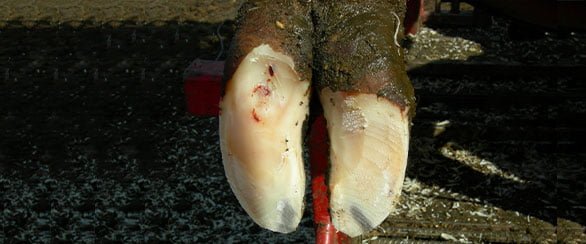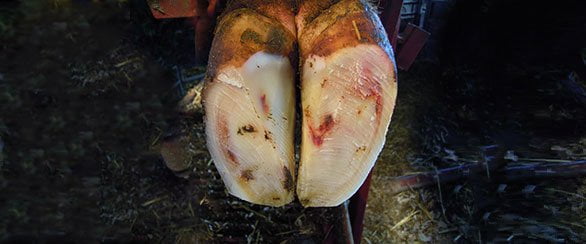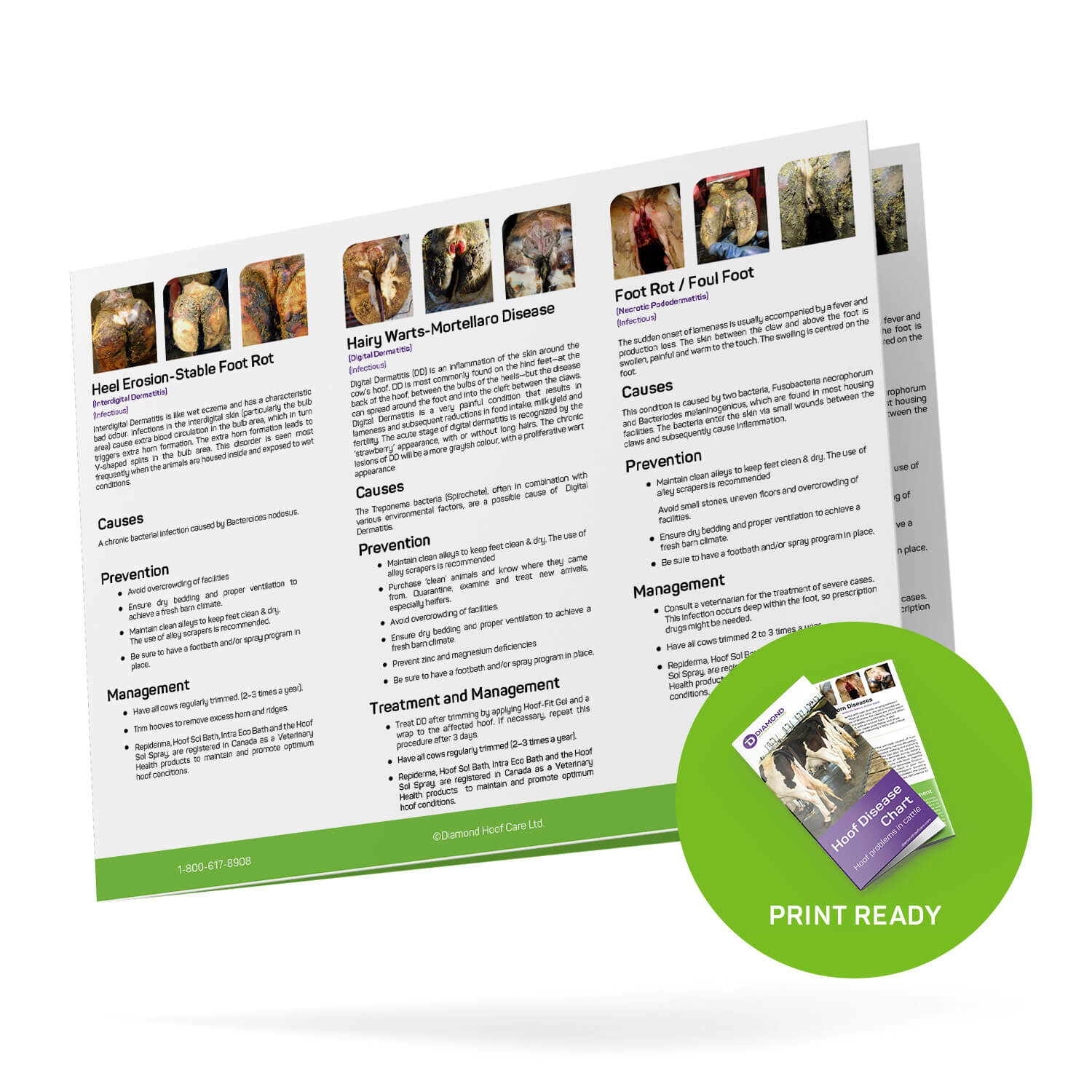About Laminitis
Laminitis in Cows
The name of the disease derives from “laminae,” which is the word for the tissue connecting the pedal bone to the inner hoof wall. Inflammation of the laminae disrupts horn production and affects the corium of the hoof.
Laminitis in cows is a metabolic, multi-factorial hoof disease. It often affects cows during specific lactation periods, for example, right after calving. One common cause is nutrition-related issues, either ration changes or deficiencies in the ration.
The condition is often associated with changes in diet, especially sudden changes in feed intake or increased consumption of concentrate feeds. As I mentioned, it affects predominantly the hind feet, but severe cases will render a cow lame in all four feet.
Let me share with you some tips I have collected on how to deal with laminitis.

What Are the Symptoms of Laminitis?
Laminitis is often used as a blanket term when a cow is lame. However, the disease affects horn production and is therefore related to secondary hoof problems.
The following symptoms could be related to laminitis:
- Sudden stiffness and difficulty in getting around: The cow often shakes when trying to stand. This would appear to be a case of acute laminitis.
- Growth rings in the horn walls: These often indicate laminitis in the past.
- Sole bruising: When the hoof is trimmed, you will observe red colouring caused by blood serum. The corium produces this poor horn, and laminitis is often involved.
- Sole ulcers: Healthy horn production by the corium is disrupted.
- Abnormal horn growth: Over time, the cow develops lower heels and long toes.
- Warm claws: When you trim the hoof, you will notice an increase in sole temperature.
What Causes Laminitis?
A herd’s environment is one of the principal causes of horn diseases. Factors to consider are a lack of space or overcrowding, inadequate housing, narrow alleyways, 90-degree turning corners, and excessive walking and standing times.
- Laminitis may occur due to the release of toxins into the laminae. This happens in cases of dietary disturbances, ill health, stress (especially around calving), or imbalanced rations (stomach acidosis). Sometimes, infections in the cow’s body (mastitis or metritis) can trigger the release of toxins and cause laminitis.
- The corium can also be affected, thus producing poor horn. This can be the result of poor blood circulation in the hooves (no exercise or standing for too long), milk fever, lack of trace minerals, and other factors.
- Environmental stress and metabolic problems result in poor horn production. Remember that improper, inadequate, and infrequent hoof trimming creates an imbalance in the weight distribution between the claws. This creates pressure points that are detrimental to proper horn production and weight bearing.
These are only some of the contributing factors. They often vary across farms, and other hoof diseases can easily be present when the herd is affected by laminitis.
I advise consulting with your farm’s nutritionist or veterinarian to address these concerns.


How to Manage and Prevent Laminitis
A harsh environment is one of the leading causes of laminitis. Therefore, being mindful of your herd’s comfort is essential.
First, make sure you have enough space and comfortable accommodation for your animals. Second, minimize standing time to allow for a maximum lay-down time.
- Healthy rumen. Rations should be well-balanced, especially in the pre-calving period. This helps avoid metabolic problems.
- Adequate water supply. Good quality water is essential for a healthy rumen and a happy cow. Testing the water and cleaning the water troughs are easy ways to prevent laminitis and many other diseases.
- Optimum calving time. The cow’s body is subjected to lots of stress around calving. Hormones and growing a calf take their toll on it. Calving pens with soft bedding and ample space plus balanced transition rations can help prevent laminitis or lessen its impact.
- Proper hoof trimming. Keeping the hooves balanced is crucial, so create a balance between the two digits when trimming. Schedule two or three trimming sessions per year for preventative hoof care management. In laminitis cases, restoring the claw to its normal shape is essential. Sometimes laminitis causes other hoof diseases, for example, sole ulcers. Your hoof trimmer will suggest using a hoof block if at all possible.
- Flooring and footing. Hard concrete floors impact the hoof and corium. Soft bedding and short standing times are great prevention measures. Slippery floors also negatively affect horn production and the cow’s movements around the barn.
The prevention strategy for laminitis can be summed up in one phrase: maximize cow comfort. Due to the multi-factorial nature of this disease, it is often challenging. For example, there is occasionally a year with a poor-quality harvest, and the forages take time to balance, causing some laminitis in the herd.

Conclusion
Laminitis is a hoof disease in cattle that can really be bothering your animals. During my career as a hoof trimmer, I have seen herds that were much affected. Round-table meetings with the veterinarian, hoof trimmer and nutritionist often bring solutions for this situation. If you are interested in knowing more about how the trim a cow, download my free cheat sheet 5-Steps to Trim a Cow.
